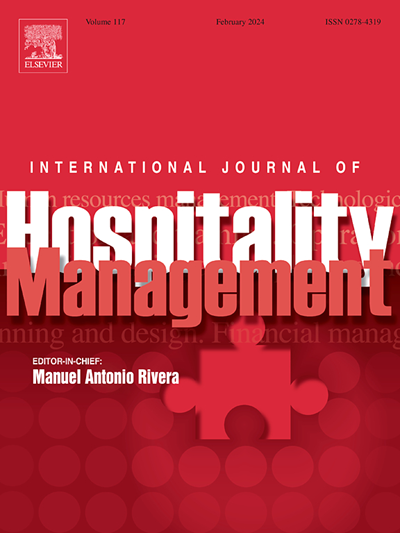Understanding the captivating power of online scarcity messages: An eye-tracking study
IF 9.9
1区 管理学
Q1 HOSPITALITY, LEISURE, SPORT & TOURISM
International Journal of Hospitality Management
Pub Date : 2025-03-21
DOI:10.1016/j.ijhm.2025.104197
引用次数: 0
Abstract
In the hospitality industry, online scarcity messages (e.g., “20 % discount, only 1 room left” or “20 % discount, only 1 day left”) are often used to increase purchases by capturing consumers’ visual attention. Although the fundamental purpose of online scarcity messages is to grab visual attention, most studies have thus far relied on self-reported data. In consequence, the scholarly understanding of the extent to which online scarcity messages captivate consumers is limited. Therefore, the objective of this study is to examine the captivating power of online scarcity messages and their subsequent impact on purchase behaviours through eye-tracking. It additionally considers two pertinent factors: scarcity message type and booking lead-time. A 2 (scarcity type: limited-quantity vs. limited-time) x 2 (booking lead-time: short vs. long) between-participants eye-tracking experiment was conducted. Limited-quantity scarcity messages attracted greater visual attention compared with limited-time scarcity messages. Visual attention was the highest when individuals came across limited-quantity scarcity messages under a long booking lead-time. Moreover, fixating more on the scarcity cue, irrespective of its type, led to higher booking probability under a short booking lead-time and lower booking probability under a long booking lead-time. Theoretically, the study contributes to the hitherto-limited eye-tracking literature on online scarcity marketing communications. On the practical front, it provides actionable insights on ways firms could improve their online scarcity messaging tactics. The implications should, however, be viewed considering the limitation that only the context of budget hotels in a domestic destination was studied. Several future research directions are proposed.
求助全文
约1分钟内获得全文
求助全文
来源期刊

International Journal of Hospitality Management
HOSPITALITY, LEISURE, SPORT & TOURISM-
CiteScore
21.20
自引率
9.40%
发文量
218
审稿时长
85 days
期刊介绍:
The International Journal of Hospitality Management serves as a platform for discussing significant trends and advancements in various disciplines related to the hospitality industry. The publication covers a wide range of topics, including human resources management, consumer behavior and marketing, business forecasting and applied economics, operational management, strategic management, financial management, planning and design, information technology and e-commerce, training and development, technological developments, and national and international legislation.
In addition to covering these topics, the journal features research papers, state-of-the-art reviews, and analyses of business practices within the hospitality industry. It aims to provide readers with valuable insights and knowledge in order to advance research and improve practices in the field.
The journal is also indexed and abstracted in various databases, including the Journal of Travel Research, PIRA, Academic Journal Guide, Documentation Touristique, Leisure, Recreation and Tourism Abstracts, Lodging and Restaurant Index, Scopus, CIRET, and the Social Sciences Citation Index. This ensures that the journal's content is widely accessible and discoverable by researchers and practitioners in the hospitality field.
 求助内容:
求助内容: 应助结果提醒方式:
应助结果提醒方式:


